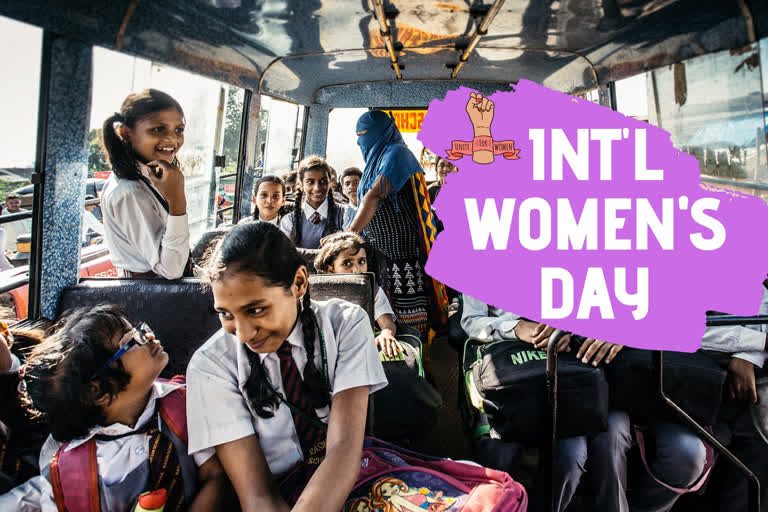Hyderabad: Ahead of International Women's Day on 8 March, the United Nations released its report "Women's Rights in Review 25 years after Beijing," which revealed that though gains have been made in education, the world still remains a violent and highly discriminatory place for girls.
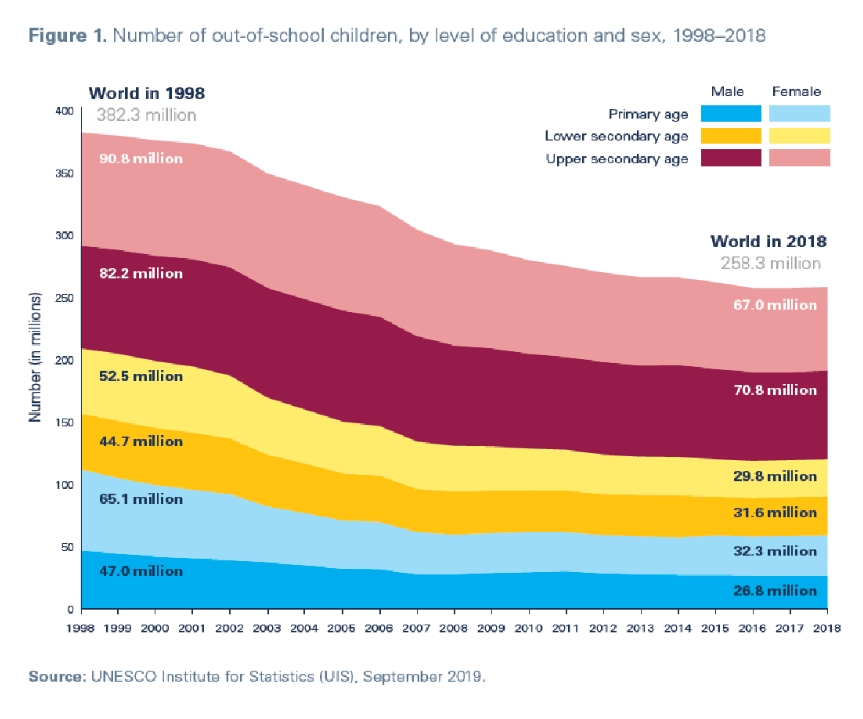
The report by UNICEF, UN Women and the non-governmental organisation Plan International, finds that progress towards gender equality is faltering and hard-won advances are being reversed. Rampant inequality, the climate emergency, conflict and the alarming rise of exclusionary politics all threaten future progress towards gender equality, an official release said.
Advances in girls' education
The report reveals that there have been advances in women's and girls' rights since the adoption of the Beijing Platform for Action in 1995. There are now more girls in school than ever before, the release said.
When it comes to education today, fewer girls are out of school. Nearly two in three girls are enrolled in secondary school compared to one in two in 1998. However, the world is facing a globally recognized "learning crisis" - which means that even when girls are in school, many do not receive a quality education.
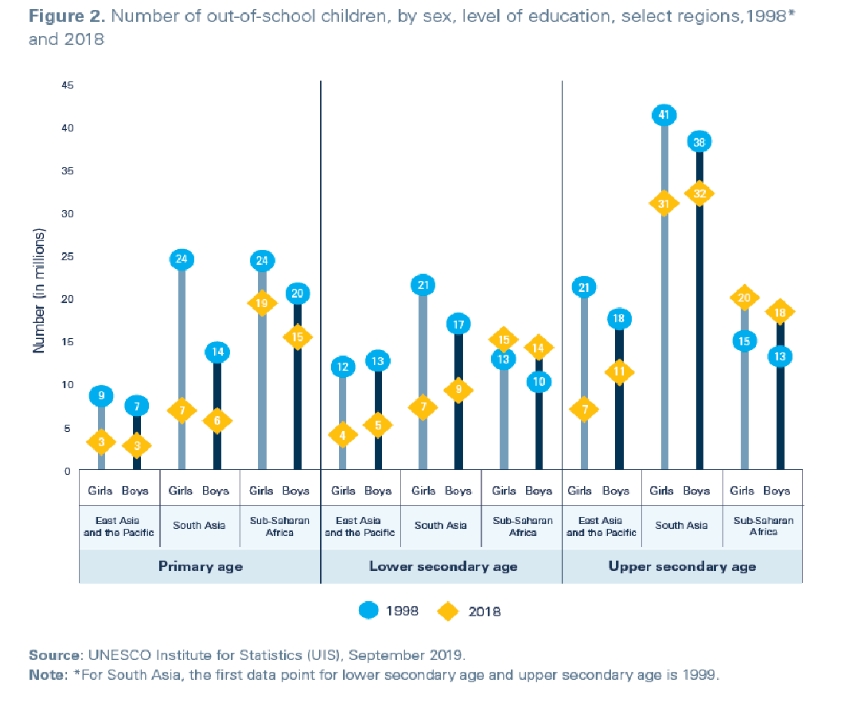
Read:| 'Women should prove themselves through their work and words'
The number of girls out of school worldwide dropped by 79 million between 1998 and 2018, the report reveals.
Globally, in 1998, there were more girls of secondary school age out of school than boys (143 million girls compared to 127 million boys). Today, the opposite is true: there are 97 million girls of secondary school age out of school compared to 102 million boys.
Still, despite the remarkable gains made for girls in the past two decades, they are still more disadvantaged at the primary level, with 5.5 million more girls than boys of this age out of school worldwide.
Further, many girls are not developing the transferable skills, like critical thinking and communication, or digital skills needed to compete in today’s labour market and the gig economy. In fact, worldwide, nearly one in four girls aged 15–19 years is neither employed nor in education or training compared to 1 in 10 boys of the same age.
Girls still victims of violence, discrimination
Despite the significant advances in education, the world still continues to be a highly violent and discriminatory place for girls.
Discrimination and harmful gender norms starting at birth (and in some places before birth through female foeticide) are often entrenched in laws and policies that fail to uphold girls' rights. The risk of violence in every space keeps girls from achieving. Thirteen million girls aged 15–19 years have experienced forced sex in their lifetimes. Meanwhile, even though harmful practices such as child marriage and FGM have declined in the past 25 years, they continue to disrupt and damage the lives and potential of millions of girls globally.
Read:| Meet Seema Rao India's 1st and only woman commando trainer
Further, conflict and displacement only heighten the risk and realities of gender-based violence. As girls lose their support systems and homes and are placed in insecure environments and in new roles, their risk of gender-based violence, including sexual violence, intimate partner violence, child marriage and abuse, increases.
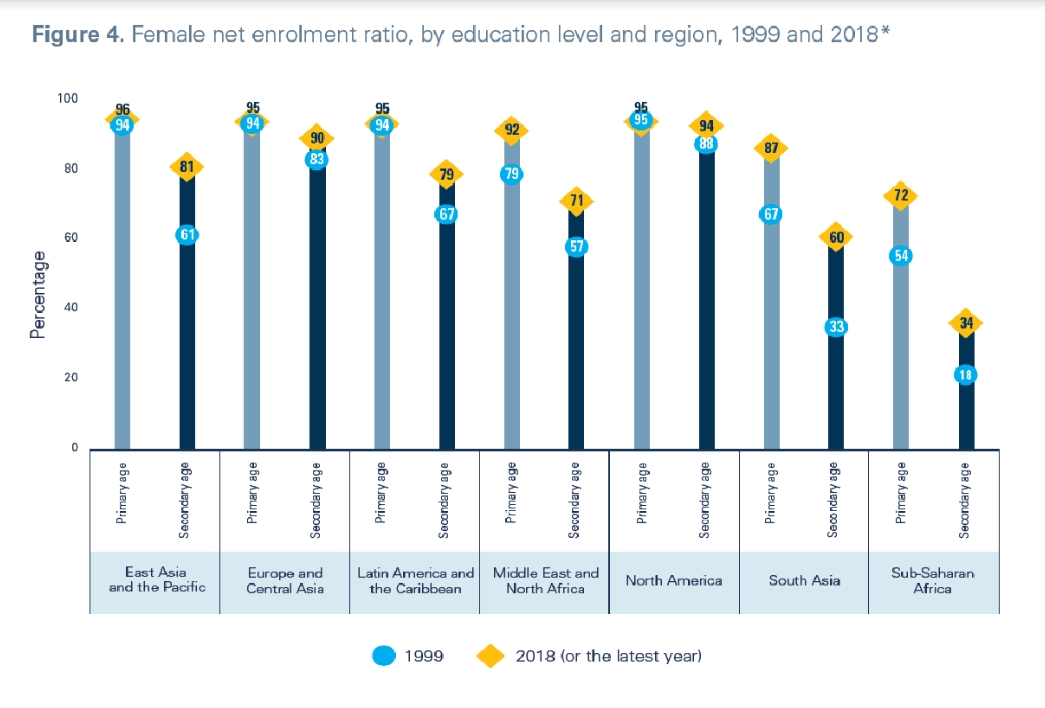
The report reveals that in 2016, girls accounted for about 23 per cent of detected trafficking victims globally, the majority of whom were trafficked for sexual exploitation.
In more than one-third of countries with comparable data, at least one in four ever-partnered adolescent girls have experienced recent intimate partner violence, and nearly four in ten adolescent girls globally think wife-beating is justified. The report further revealed that most adolescent girls who have experienced forced sex never seek help.
Girls still at risk of being infected
While fewer adolescent girls are becoming mothers today, they still face a high risk of sexually-transmitted infections and anaemia – risks that increase when they struggle to access age-appropriate health services and information. This is nowhere more obvious than in the case of HIV, where adolescent girls continue to bear the brunt of the virus’s effects. Globally, 9,70,000 adolescent girls aged 10–19 years are living with HIV today, compared to 7,40,000 in 1995.
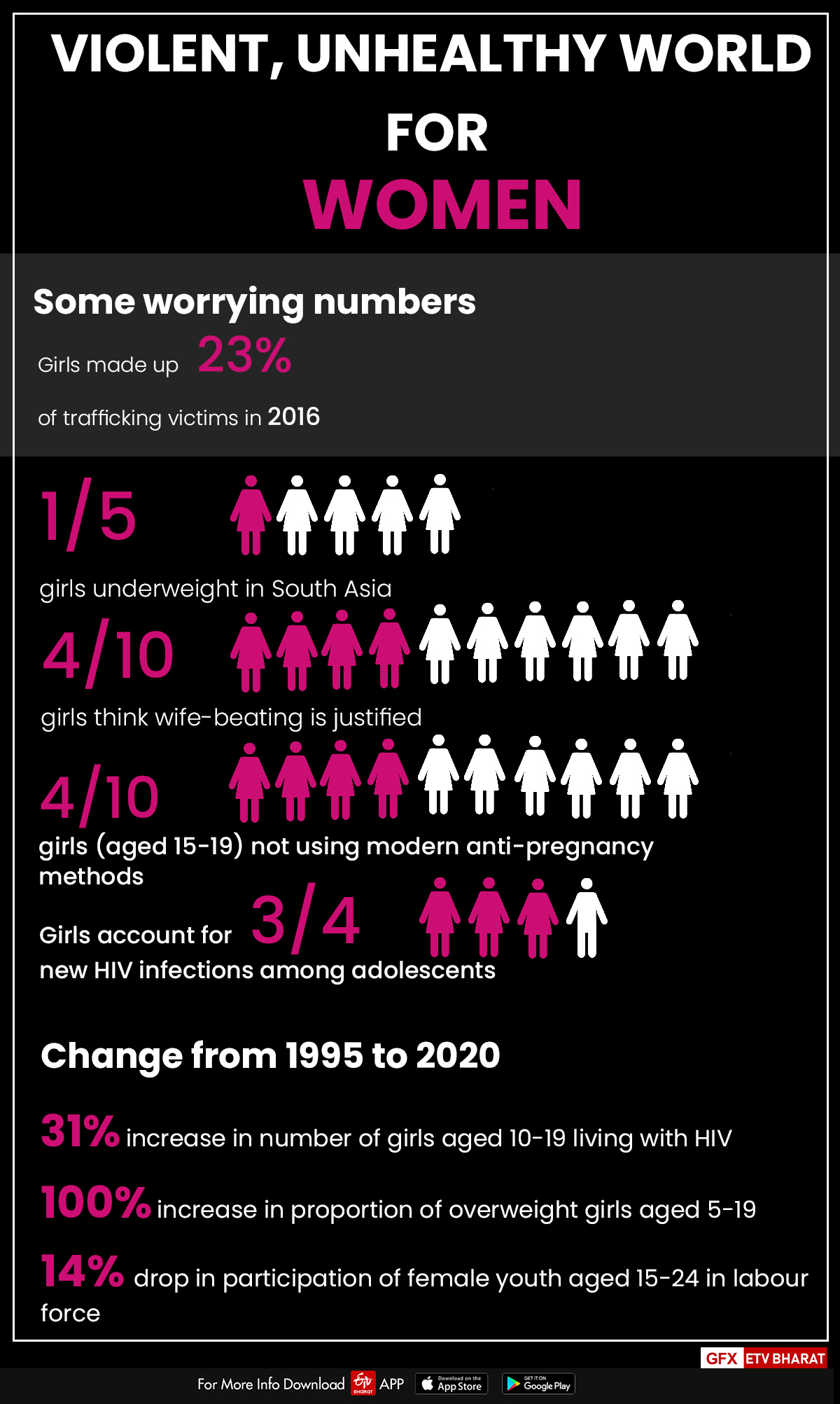
The report reveals that only a few adolescent girls are receiving essential maternal health care. While adolescent girls' access to family planning has increased over the past 25 years, many girls' needs remain unmet. Yet, four in ten adolescent girls aged 15–19 years who want to avoid pregnancy are currently not using a modern method.
Read:| Women's Day Special: Meet Solan's Wonder lady Sanjana Goyal
